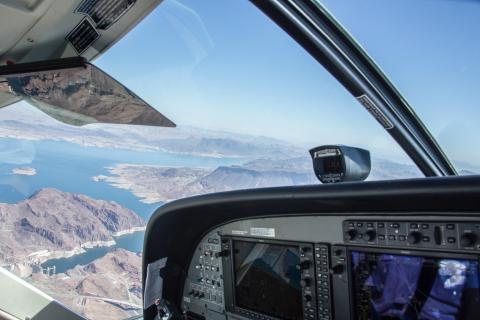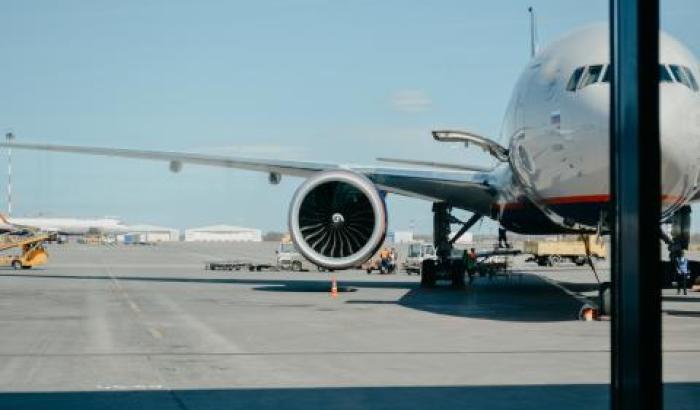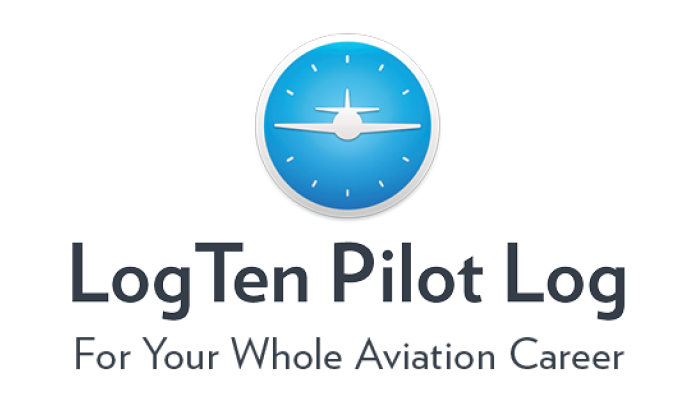
With the warm weather in full swing, now is the best time to take advantage and ramp up your hour building with cross-country navigation flights. Navs can be an enjoyable but testing experience, so it is important to arm yourself with the best tools to ensure you get the most out of your flights.
Whether it is for a PPL, working towards a CPL, or even just a general leisurely bimble on a weekend, below we have some useful tips for you to execute your navs successfully and hone your skills as a pilot.
Plan Prepare Proceed
The key to any successful flight is effective preparation, beginning on the ground before you even get into the aircraft. Make sure that your route is planned out and structured on a Plog, with all the necessary enroute points labelled, along with tracks, wind corrected headings, distances, times and safe cruising altitudes. Your school should be able to provide you with a Plog template. Ensure that if you are using a paper VFR Chart, your tracks are drawn out clearly along with drift lines for deviations. Keep a note of your diversion airports should a setback arise and take their airfield plates with you, along with the frequencies. Carry a fully charged electronic tablet with GPS and a moving map, such as SkyDemon, as a backup so that you can cross-check your position to ensure you are clear of any controlled airspace or danger/restricted areas. (Keep in mind that you will only be allowed to use a paper chart on your flight tests, so don't solely rely on moving maps during training)
Check the weather twice and then once again before flying so that you know your entire route is within VFR limits. The last thing you want is to get halfway along your route and find you are trapped in by heavy rain clouds! Always plan ahead and have alternate routes in mind.
Twist Turn Time Talk
As you approach the end of your current leg, adopting a structured method to turn onto the next one is important to enable a smooth transition. First, by looking at your Plog, which should have your pre-calculated heading, twist your heading bug onto that new heading. Then, after a good lookout to ensure safety, turn onto that heading followed by a gradual rollout. Next is to start your timer for the new leg and also record the time overhead the turnpoint so that you may update your Plog and make any readjustments to your ETAs. Finally, once you are happy with flying and navigating, you can update ATC if needed, such as a position report, airspace transit request or anything else you deem necessary. At this point you can also update your radio to prepare for frequency changes up ahead. Using this method will make flying your route much easier and more manageable.
Fly the aircraft - Aviate, Navigate, Communicate
“Fly the aircraft” may seem a very obvious thing to say, but it is easy to get sidetracked during a nav, especially during periods of high workload. Your first priority as a pilot is to Aviate, then Navigate, then Communicate. Always keep the scan going to ensure you're not deviating from your flight parameters, such as altitude, speed, heading etc. After all, it is counterproductive to be so focused on navigating that you drop significant altitude or unintentionally climb and bust airspace. During your tests you will have strict margins to stick within i.e +/- 100ft for altitude, so make sure that if you notice a small deviation building up, correct it straight away - remember, a small error left unnoticed can build into a big one that can prove to be quite sinister. Also important is doing your regular checks, such as Temperatures & Pressures in the green, Altimeter checks, Fuel quantity and burn etc. Setting a timer can be a useful way to keep on top of this.
Monitor your flight path
It is important to constantly keep on top of your route in which you are flying. A good way to do this is to cross-check every 30 seconds or so between your chart and what's outside. You may even wish to mark dots on your track line so that you can spot any trends which can be corrected either straight away or at a predetermined correction point such as the halfway mark. This serves to keep a high level of situational awareness as you will always be ahead of the aircraft by spotting any errors which may be building up, such as flying close to controlled airspace or restricted areas, gliding sites etc. If you are approaching an area or feature which you need to avoid instantly, a good way to do this is to fly a dog leg segment, which will take you around the obstacle - 60/60/60 is a useful one to do which involves 60degree offsets and 1-2 minute legs.
Track Error Methods
Having good knowledge of track error correction methods is vital in flying a successful nav. It is common to drift slightly during your flight, which can be down to various factors such as; Wind direction/speed changing once you get in the air (most common), miscalculating headings and times, or just not flying the aircraft accurately enough. This is nothing to worry about as it happens to all of us at all levels and is why correction methods are in place.The 3 main ones are; Closing Angle, Standard Closing Angle and Double-and-Halves. It is advised to study all 3 and then pick which one is right for you. You may spot a deviation early on in your leg and wish to correct it straight away, or prefer to wait until the halfway point to correct. Your instructors will teach you the methods and give you the opportunity to practice them during your navs. Keep in mind that if the worst happens and you find yourself truly lost, ATC can help you by giving a position fix or vectors to a location you are familiar with, so there is nothing to worry about.
Identify 3 features
When you reach your destination or turning points, you will be required to identify 3 features to confirm that you are at the correct place. Cross checking the outside landscape with your chart is how you would do this. Features such as roads and junctions, railway lines, wooded areas, lakes, built up areas, VRPs etc are great ways to do this. Once you are happy with your judgement, you can proceed onto the next leg or section of your flight. Make certain that you have identified the correct place, because there can be more than one waypoint that has similar features and it is easy to misidentify the wrong one which will throw your nav off. Try to locate your waypoint in reference to other areas as well and not just the waypoint itself. I.e, if you identify a small town with a motorway to the north, a railway line to the south and an industrial estate to the east, try and locate any other towns or features that may be nearby so that you can be sure you have identified the correct town. Remember that if you do get disorientated or can't find your features, orbiting at your present position (if it’s safe to do so) is a good way of buying yourself some time and capacity to get your bearings back.
Gross error checks too are useful as a quick analysis method. I.e using major landmarks, compass directions such as turning onto an Easterly/Westerly heading. Or if flying a coastal segment, is the land to the left and sea to the right? For example, you start a turn onto your next leg and cross check the outside with your map that a large wooded area should be now behind you to the left, the coast on your right and you have turned onto an easterly heading. Gross error checks allow you to further strengthen your situational awareness and keep your orientation optimal.
Diversion Plotters
This is a very handy tool to have in your flight bag as it will make planning an inflight diversion much easier, which you will need to do for your flight tests. It is also handy incase you need to make an unplanned diversion in the middle of a general nav if you find yourself not being able to continue to your destination or proceed along your predetermined route. You simply need to calculate the winds that are along your route and then mark them on the compass section of your plotter - this will allow you to calculate which headings to fly according to the track you want. The ruler section will enable you to work out track distances and times according to the speed your aircraft is cruising at. Instructions are provided with your plotter, but your instructors should be able to tell you how to use it, also there are easy tutorials online. A good way to practice is to draw a nav route and your chart and then ask your instructor or classmate to mark a diversion point to which you have to plan right away under timed conditions. This is like seat-flying which will serve as good practice. You can also do this exercise for track error deviations.
You can purchase these at Pooleys Flight Equipment and use promo code “PilotNetwork5” for a discount.
Sleep,Eat,Drink
Rest and Nutrition is key to ensure you are alert and well focused. Keep snacks, such as fruit, nuts, cereal bars and sandwiches, as well as water, in your flight bag so that you can have a quick pick me up, especially if it's a long nav. Low blood sugar and dehydration will cause tiredness and drop in concentration which is detrimental and will prevent you from performing efficiently.
Know your RT calls
Adopting the correct and fluent RT practice is imperative so that there is clear communication and understanding between you and ATC to ensure that they know exactly what you're doing and avoid any confusion. This is especially important when receiving clearances, flying in busy airspace, controlled airspace or landing into other airfields, where everything has to be on point to maximise safety and efficiency. Study CAP413 to learn and practice the calls that you will need to make during your navs - this will ensure that all of your RT is standardised. Keep a thought regarding emergency calls such as Pans or Mayday, just in case you require them.
Don’t neglect writing elements of messages, either received or which you are about to transmit, on a piece of paper instead of just trying to remember everything - even the most experienced airline pilots write stuff down! - plus you can refer to it later on if a situation arises that requires you to recall information.
Push yourself!
This may sound a bit cliche, but what is meant here is try not to always opt for “easy” or straightforward routes. Try and challenge yourself with each nav, which will improve your skills and confidence levels. Plan navs which will take you into controlled airspace, make you avoid restricted areas, MATZ penetrations and doglegs. Of course, prior to embarking on these navs, ensure that you've studied the correct methods and RT to do them. Landaways are also a great way to challenge yourself as it will give you the opportunity to fly various approaches and departures, as well as mixing up your flights as there are many great airfields to land at and have a well earned rest and refreshments! You may even wish to take your friends and family with you if you have an SEP rating!
Thank you for reading and we hope these tips help with your navigation flights. Go up and have some fun!
The Pilot Network Team










